Using the Hierarchy Explorer widget
DM
DS
ST
When you open the Hierarchy Explorer widget for the first time, a directory of all HCOs that have been defined as key networks in your Network instance displays. The list is filtered by the defined country.
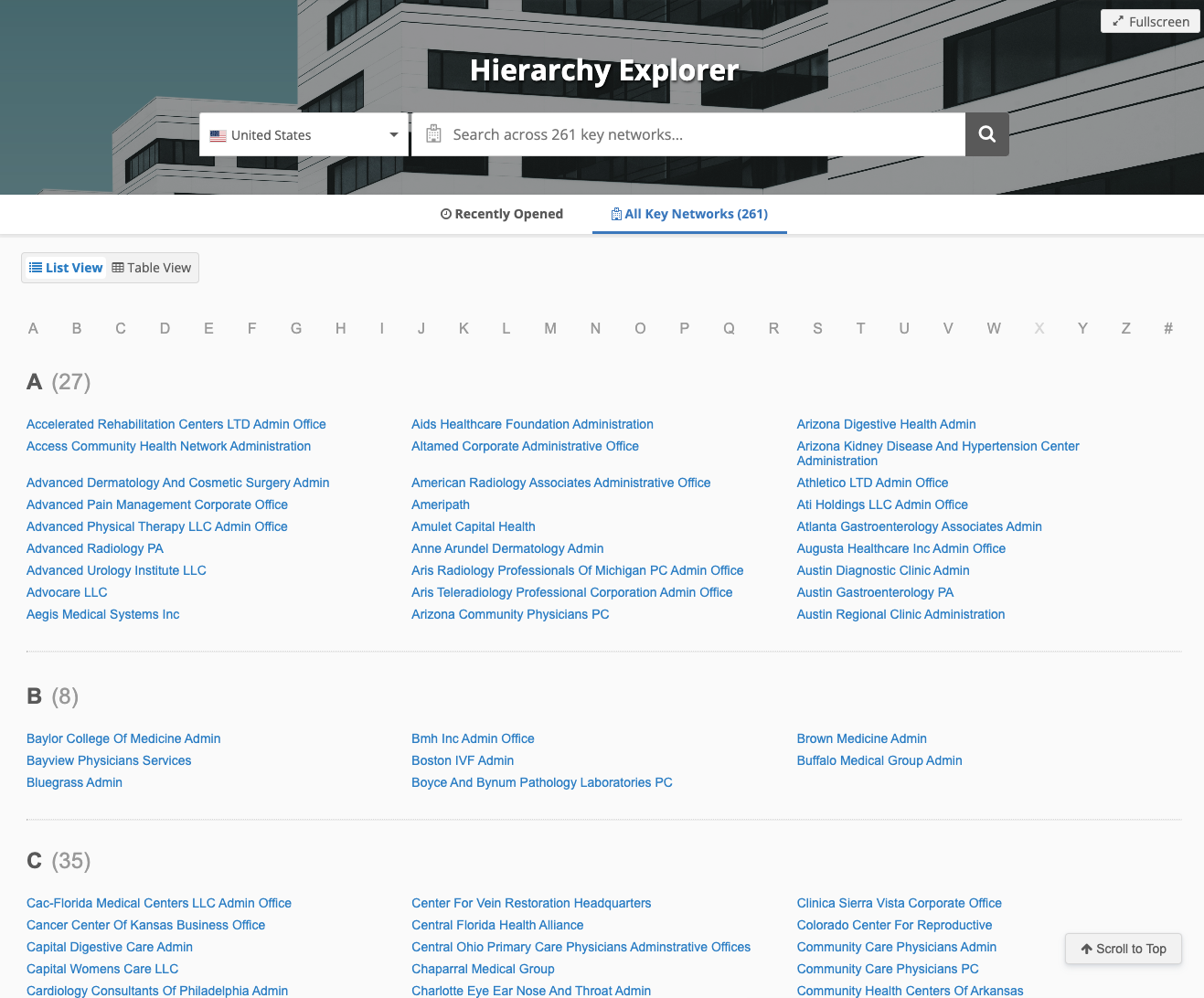
Recently Opened
When you return to the widget and open it, HCOs that you have explored previously display in the Recently Opened view. Only HCOs that have a valid record state display.
Click an HCO to open that hierarchy.

HCO details
Each list entry includes the HCO's name, address, country, and associated hashtags. The address that displays is the top ranked address (rank =1) that is active.
The HCP Type column displays by default. Administrators can include an additional column to provide more details for widget users. Additional columns are added in the widget configuration in the Additional Fields Displayed section.
-
Click an HCO to open the hierarchy for that account.
Find a key network
To find a key network for a specific country:
-
Search bar - Type a keyword to find an HCO.
-
Search icon - Click to display an alphabetical list of key networks.
-
Directory view - Click All Key Networks to explore the key networks in alphabetical order in a List View or Table View.

Define the country
Select the country to find health systems.

This list includes countries that were defined for the Hierarchy Explorer widget and that you have access to through your data visibility profiles.
A count of the HCOs that are considered top parent HCOs display.
HCOs are considered top parents based on the top parent mapping for the country in the widget configuration.
In the Hierarchy Explorer widget configuration, the Top Parent Mappings for the United States is set to HCO Type = Organization, Health System and Status = Active. This means that in the widget, only HCOs that are active health systems will display when the selected country is United States.
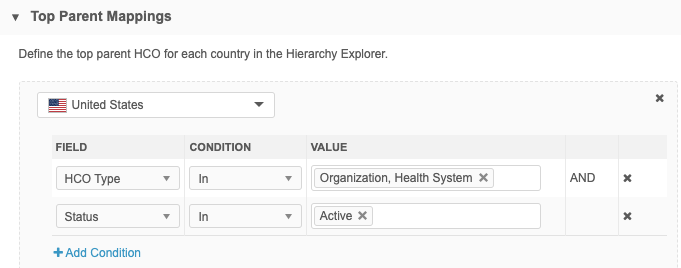
Directory view
Click All Key Networks to view all the HCOs that are defined as key networks in your Network instance.
List view
The key networks/IDNs are organized in alphabetical order by name. Click a letter to view the key networks that begin with that letter. If the letter is dimmed, there are no key networks that have a corporate name that begins with that letter.
A count of key networks displays beside the opened letter.
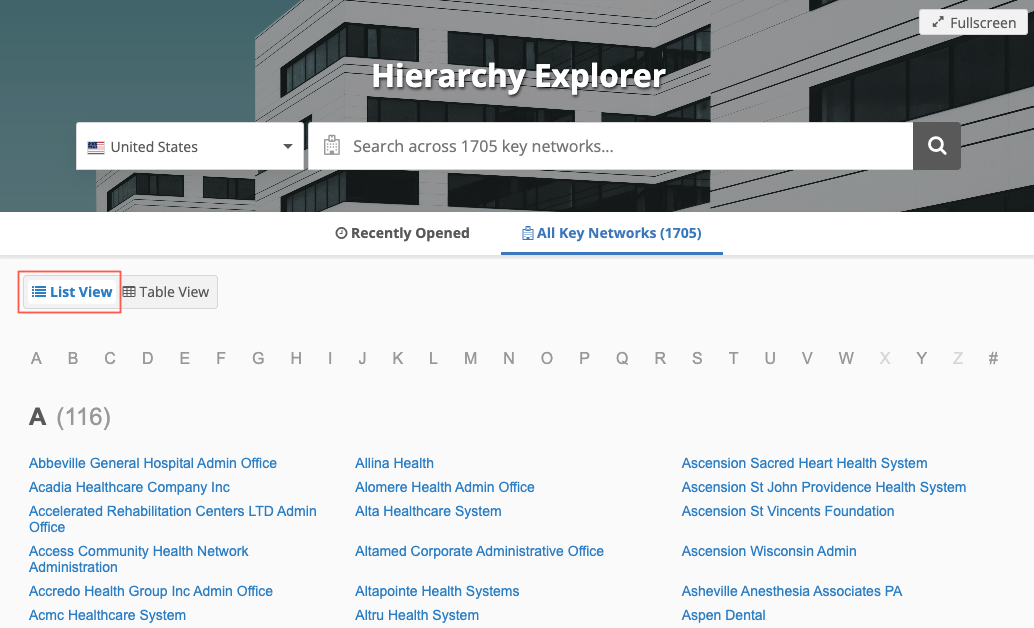
Tip: Key network/IDN names that do not begin with a letter (A-Z), display under the Hashtag # symbol.
Navigate the directory view
-
Click the letters in the heading to view the key networks that begin with that letter.
-
Use the Previous or Next links at the bottom of the page to move between letters.
-
Click Scroll to Top to return to the top of the page.
Note: As you scroll through the list, the Hierarchy Explorer banner hides so you have more space to view the list of health systems.
Smaller directories
When the widget contains fewer than 2000 key networks or IDNs, the HCOs display in alphabetical order on a single page. You can quickly scroll through the list or select a letter in the header to move to that section on the page.

Business cards
Hover over a key network/IDN name to display a pop-up containing the following details:
-
corporate name
-
address
-
HCO type

These details can help you identify the correct key network, especially when they have the same or similar name.
Table view
Widget users can find key networks using the Table View. The table view displays additional details about the key network.
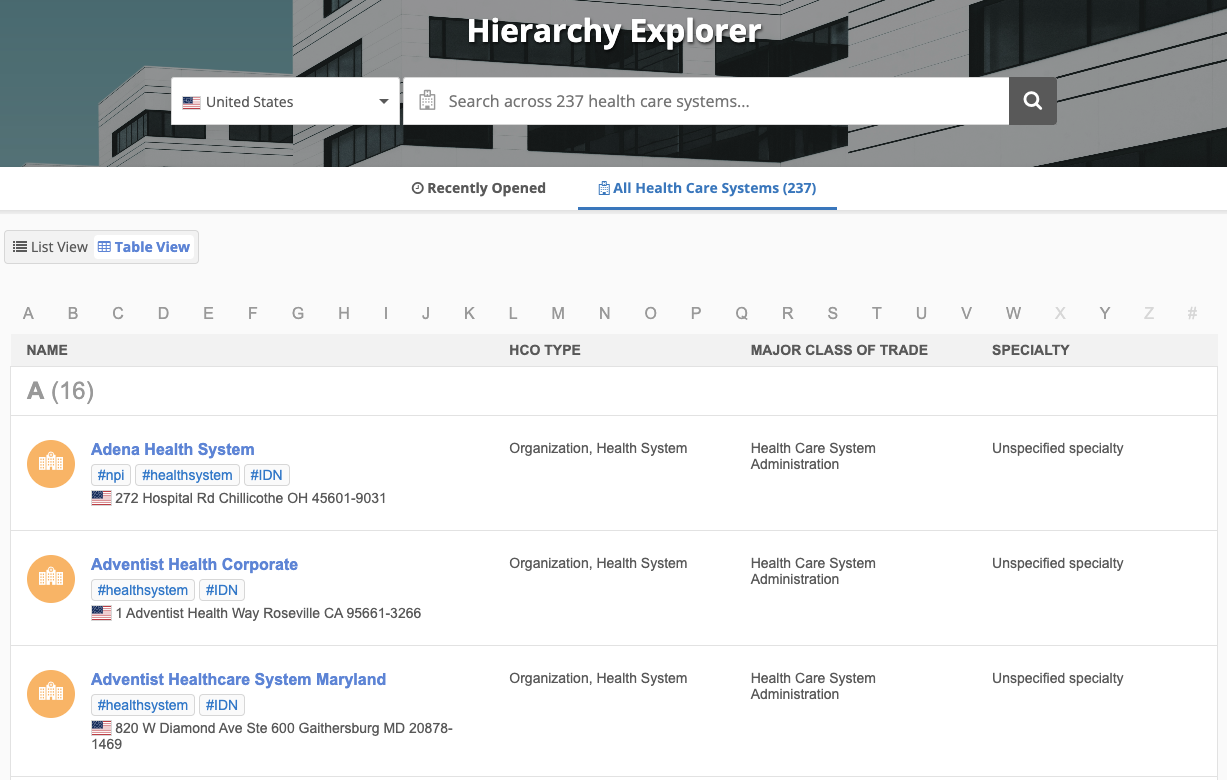
The key networks are organized in alphabetical order. Click the letters in the header to find a key network by its corporate name.
If there are fewer than 2000 key networks in your Hierarchy Explorer widget, the key networks display on a single page in the table view. Scroll through the page to find the key network by their corporate name or click a letter in the header to scroll to that section on the page.
Details
By default, the following details display for each key network:
-
corporate name
-
HCO type
-
address
-
VID
-
hashtags
Tip: Administrators can add to or change the columns in the table by defining fields in the Additional HCO Fields section of Hierarchy Widget configuration.
Tabs
Click Add Tab to create a tab for specific hierarchy data (for example, Pharmacies, Boston Hospitals, IDNs) so you can quickly access those HCOs.
For details, see Hierarchy Explorer tabs.
All hierarchies view
When you select an HCO, the Hierarchy Explorer opens to the All Hierarchies view for this top parent HCO. The view displays all of the active HCO and HCP relationships for this HCO.
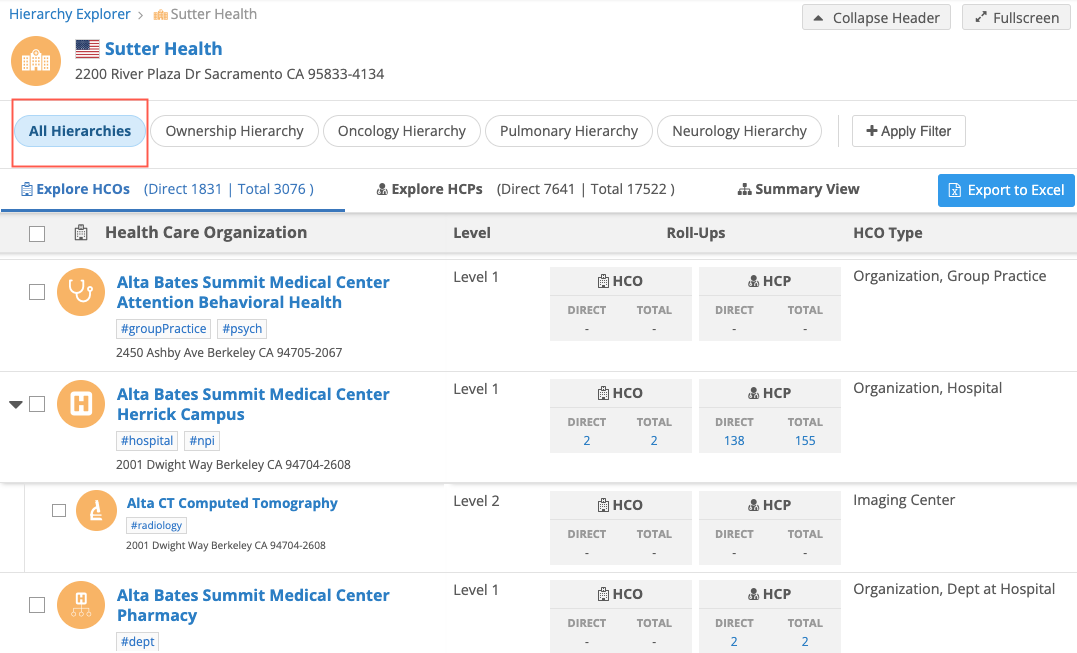
Display the Summary View by default
Administrators can configure the widget to display the Summary View when users open an HCO so they can immediately understand the HCO's hierarchy.
For details, see Configure the Hierarchy Explorer widget.
Custom hierarchies
Use custom hierarchies to visualize primary relationships for specific business purposes. For example, you might have a hierarchy for sales roll-ups or for specific therapeutic areas (Neurology or Oncology). The HCO and HCP relationships that display will be filtered based on the criteria that you define for the custom hierarchy.
